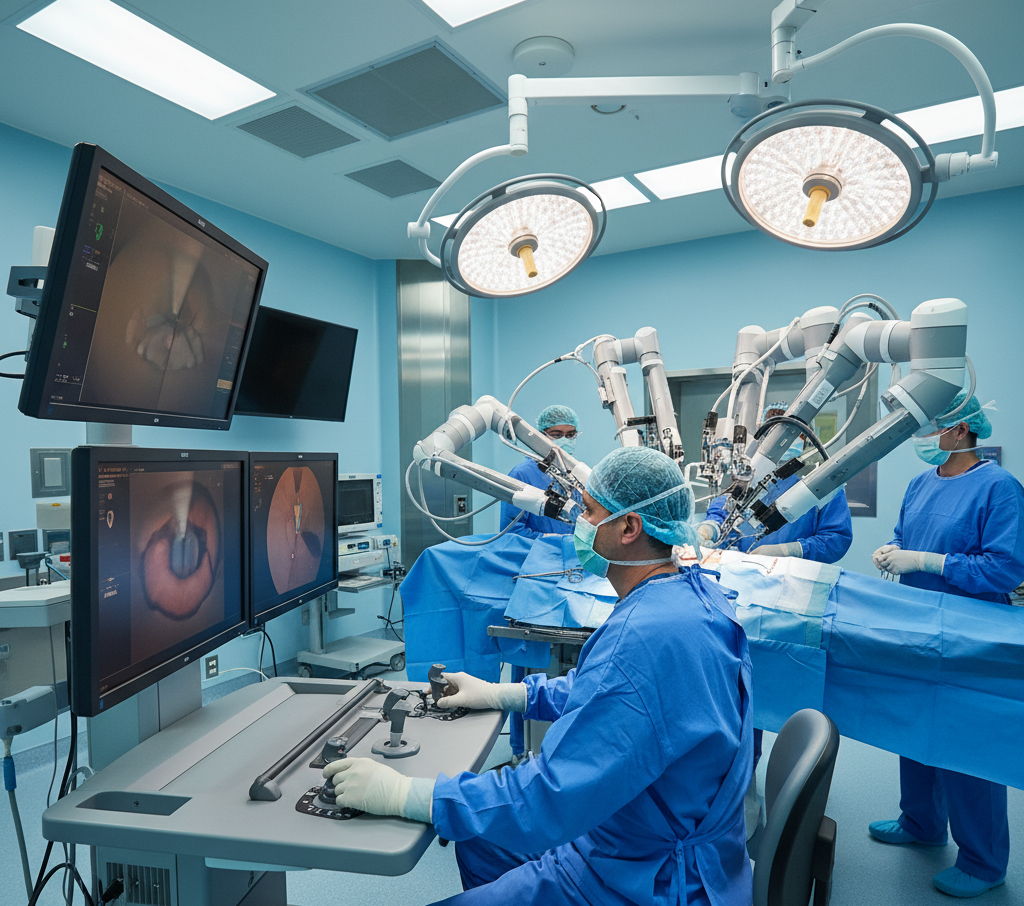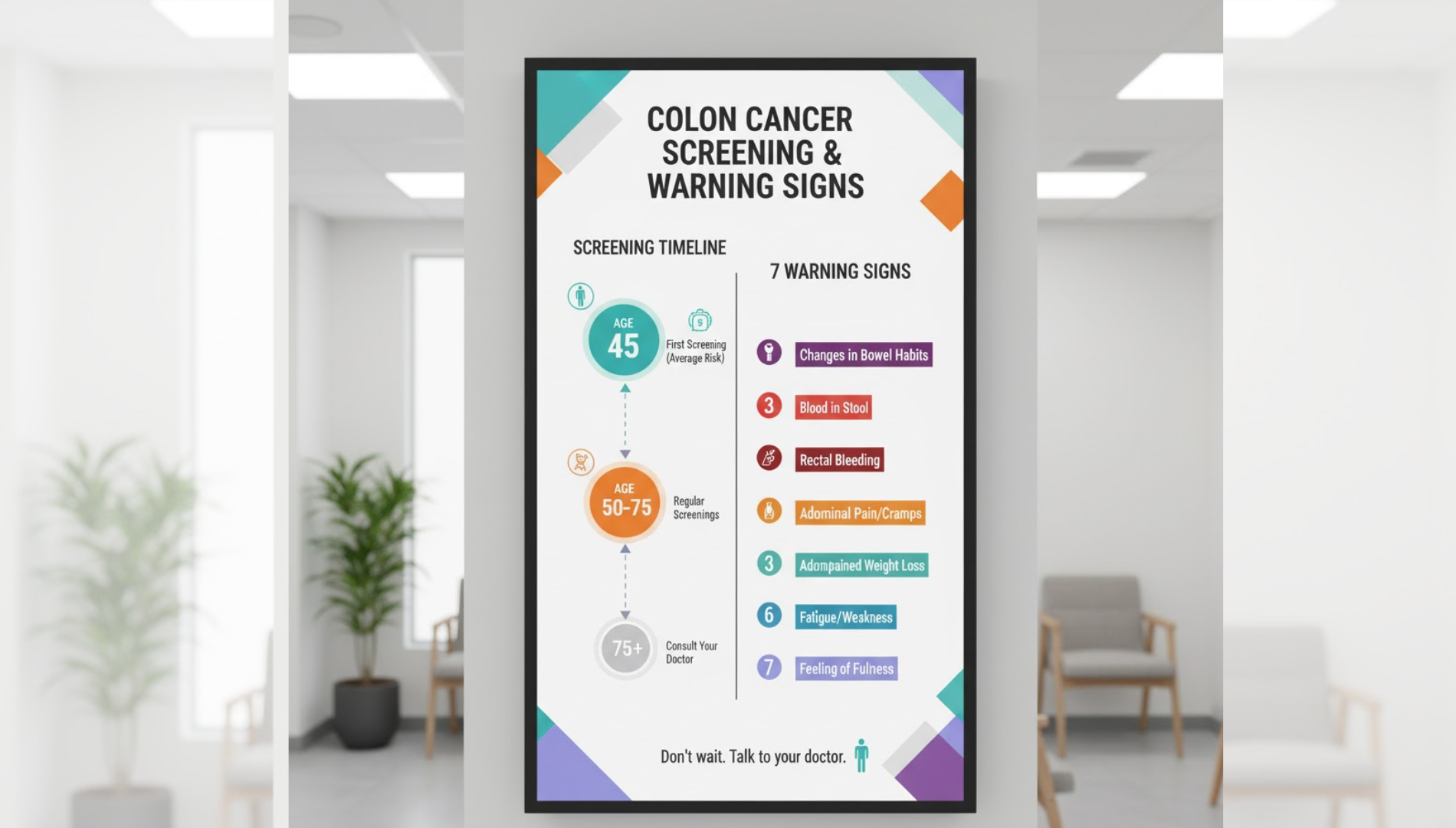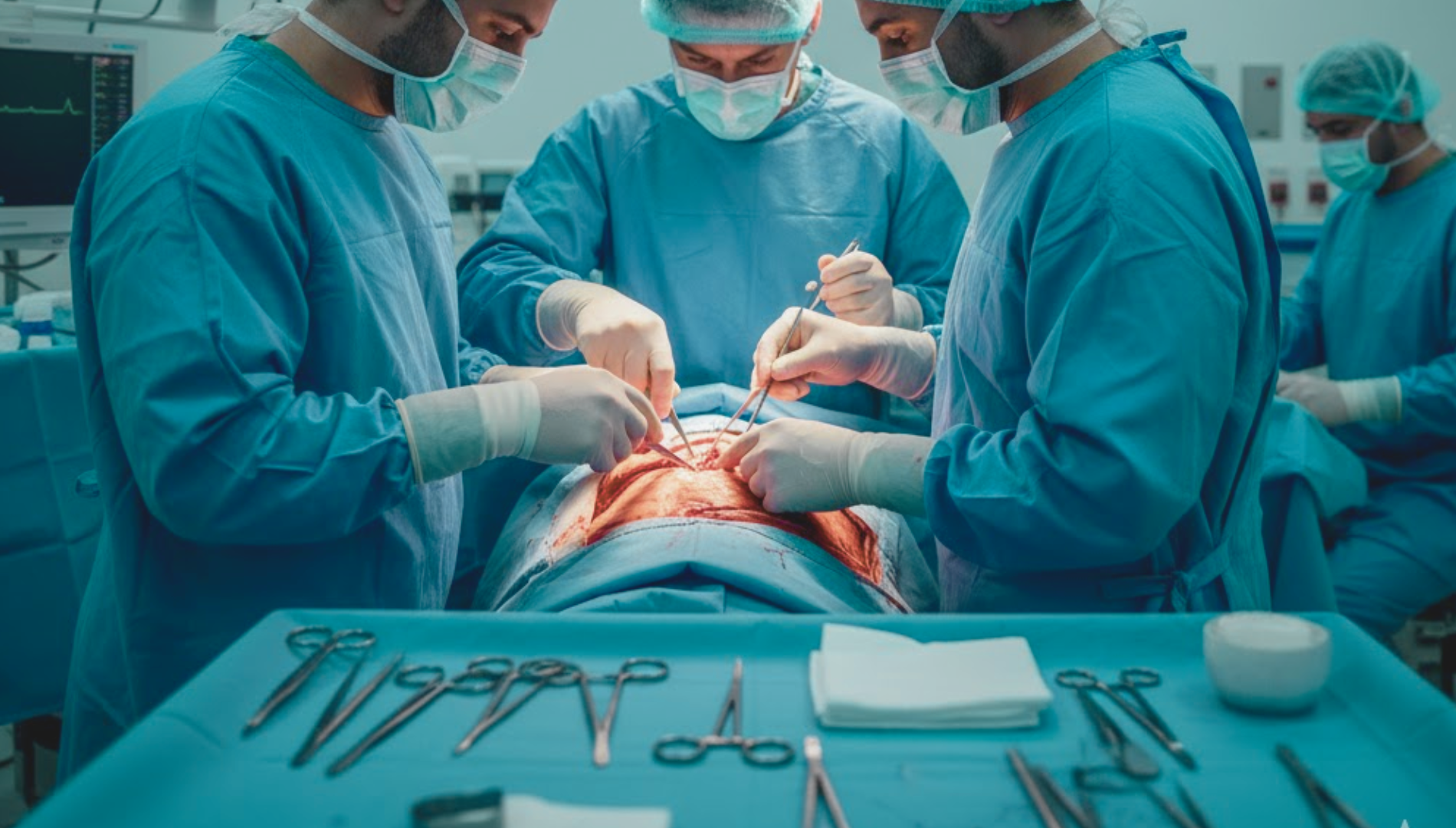Why Robotic Surgery Is Transforming Patient Care

Imagine walking into surgery knowing your doctor has a clearer view, steadier control, and tools that move with unmatched precision. That is the reality of modern robotic surgery. Once seen as futuristic, it’s now transforming how patients experience treatment and recovery.
Robotic systems allow surgeons to perform complex procedures through tiny incisions, giving patients less pain, smaller scars, and faster healing. Hospitals across the country are adopting these methods for everything from gallbladder removal to robotic hernia surgery, with the latter becoming one of the most trusted and effective uses of this technology.
In this article, you’ll learn how robotic surgery works, why it’s changing healthcare, and how it gives patients safer, quicker, and more comfortable outcomes than ever before.
What Is Robotic Surgery?
Robotic surgery is an advanced medical technique that uses robotic systems to assist surgeons during operations. Instead of making large cuts, doctors perform precise movements through small incisions using robotic arms that mirror their hand motions. These arms hold miniature surgical instruments and are guided by the surgeon sitting at a nearby console.
The system provides high-definition, magnified 3D views that allow surgeons to see tiny details inside the body. Every movement is controlled by the doctor, ensuring accuracy and safety. According to the American College of Surgeons, robotic surgery offers better precision and flexibility than many traditional methods, helping doctors reach hard-to-access areas with minimal damage to surrounding tissues.
For patients who need hernia repair, robotic hernia surgery is a leading example of how this technology enhances results and shortens recovery time.
How Does Robotic Surgery Benefit Patients?
For patients, the difference between robotic and traditional surgery is clear. Robotic-assisted procedures use smaller incisions, which means less pain, lower infection risk, and minimal scarring. Most patients can return to work and normal life faster than after open surgery.
Because the robotic tools are so precise, surgeons can avoid unnecessary tissue damage, which reduces bleeding and discomfort. Hospitals that offer robotic hernia surgery have reported improved outcomes and higher patient satisfaction.
Patients can even schedule consultations and request quotes to learn what type of robotic procedure fits their condition and budget. It’s a new level of personalized care that balances comfort, safety, and effectiveness.
How Has Robotic Surgery Changed Healthcare?
Robotic surgery has redefined how hospitals operate and how patients experience medical care. Procedures that once required long hospital stays can now be done as same-day surgeries. This not only lowers healthcare costs but also allows hospitals to treat more patients safely and efficiently.
For surgeons, robotic systems offer improved control and endurance, especially during long or complex cases. The rise of robotic hernia surgery shows how technology can make even routine procedures more precise and consistent.
Across the healthcare industry, robotics has improved safety, reduced complications, and made advanced care accessible to more people.
Is Robotic Surgery Safer and Improves Patient Recovery Time?
Yes. Robotic surgery is designed to make procedures safer and improve recovery times for patients. The technology’s enhanced precision allows surgeons to operate in confined areas without harming surrounding tissues. This lowers the risk of bleeding and infection.
Recovery time is often shorter because robotic instruments cause less trauma to the body. In many cases, patients who undergo robotic hernia surgery go home the same day and return to light activity within a few days.
The combination of surgical skill, advanced equipment, and real-time monitoring makes robotic procedures one of the safest forms of modern surgery available today.
How Robotic Surgery Differs from Traditional Surgery
Traditional open surgery involves large incisions and direct hand manipulation. Robotic surgery, on the other hand, uses tiny incisions and robotic arms controlled by the surgeon. This setup offers unmatched precision and stability.
Unlike laparoscopic surgery, which relies on rigid tools and two-dimensional visuals, robotic systems provide a three-dimensional, magnified view. Surgeons can rotate instruments with more freedom and accuracy.
This difference is why many patients prefer robotic hernia surgery, which combines the skill of a trained surgeon with the advanced capabilities of robotic technology.
Key Benefits of Robotic Surgery for Patients
Robotic surgery is transforming recovery experiences around the world. Key benefits include:
- Smaller incisions: Minimal scarring and faster healing.
- Less pain: Reduced need for pain medication.
- Lower infection risk: Smaller wounds heal faster.
- Shorter hospital stays: Many patients go home within hours.
- Improved accuracy: Better results and fewer complications.
These advantages are especially clear in robotic hernia surgery, where faster healing and minimal downtime make life easier for patients.
Why Surgeons Are Choosing Robotic Hernia Surgery
Surgeons value robotic technology because it enhances their precision and endurance. The robotic console provides 3D visualization and tremor-free movement, allowing for meticulous tissue repair.
In robotic hernia surgery, surgeons can perform complex repairs that are difficult to do by hand, especially in tight or sensitive areas. The technology improves comfort for both doctor and patient.
Patients can meet with a surgeon, review their treatment options, and get a personalized quote to understand the cost before surgery. This transparency helps build trust and confidence.
The Role of Robotic Surgery in Hernia Repair
Hernia repair has become one of the most common uses of robotic technology. During robotic hernia surgery, the surgeon uses robotic arms to place mesh or repair tissue with pinpoint accuracy.
The smaller incisions reduce pain, and patients often resume light activities within a few days. The procedure combines the reliability of traditional repair with the benefits of advanced robotics.
For detailed information, visit Robotic Hernia Surgery at Copper Mountain Surgical.
Safety and Reliability of Robotic Surgery
The FDA has approved robotic surgery and has been used safely in hospitals for over two decades. Each system undergoes strict testing, and surgeons receive specialized training to operate them.
Research from the Journal of the American Medical Association shows that robotic procedures have similar or lower complication rates compared to traditional surgery. Clinics like Copper Mountain Surgical combine expert training with advanced systems to ensure every procedure meets the highest safety standards.
Patients can trust that robotic hernia surgery is not only effective but also proven to be one of the safest options for hernia repair today.
What to Expect During Robotic Hernia Surgery
Your experience begins with a consultation, where your surgeon reviews your medical history and explains treatment options. You’ll also receive a quote based on your specific case.
On the day of surgery, anesthesia is administered, and the surgeon operates through small incisions using robotic tools. You’ll likely go home the same day and receive simple aftercare instructions.
Throughout the process, your comfort and safety are monitored by the surgical team at Copper Mountain Surgical, ensuring a smooth and stress-free experience.
Recovery and Aftercare
After robotic hernia surgery, most patients recover quickly. Minor soreness or swelling may occur for a few days, but it improves with rest and proper care.
Clean the incision site gently, avoid heavy lifting for at least a week, and follow your doctor’s instructions closely. Regular check-ins help confirm that healing is progressing normally.
The personalized care provided by Copper Mountain Surgical ensures each patient gets the right guidance for a safe and full recovery.
How Robotic Surgery Improves Long-Term Outcomes
Robotic precision results in fewer complications and better long-term outcomes. For hernia repairs, this means reduced recurrence rates and stronger tissue healing.
Because surgeons can work with greater accuracy, patients experience smoother recovery and longer-lasting results. Many people who undergo robotic hernia surgery report improved comfort and confidence compared to older surgical methods.
How Is AI Transforming Patient Care?
Artificial intelligence is shaping the next generation of surgery. AI assists surgeons by analyzing imaging data, predicting risks, and improving decision-making during operations.
In robotic hernia surgery, AI helps plan incision placement, guide instrument movement, and track patient vitals in real time. These smart systems make each procedure safer and more efficient.
As technology continues to evolve, AI and robotics together are creating a future where surgery is faster, safer, and more personalized than ever before.
The Future of Surgery, Where Robotics Is Heading
Robotic surgery is just the beginning. Future systems will feature smarter sensors, advanced imaging, and even smaller instruments. These improvements will allow doctors to perform complex procedures with less disruption to the body.
As hospitals embrace these technologies, robotic hernia surgery and other minimally invasive procedures will become standard options for more patients seeking safer, faster care.
Conclusion
Robotic surgery has changed what patients can expect from modern healthcare. With smaller incisions, faster recovery, and higher precision, these systems are improving outcomes for countless people every year. What once required large cuts and long hospital stays can now be done through tiny openings with incredible accuracy.
Procedures like robotic hernia surgery show just how far medicine has advanced. Patients experience less pain, shorter recovery times, and long-lasting results that help them return to normal life sooner. For doctors, robotic tools mean better control and safer operations, which lead to stronger repairs and happier patients.
If you’re ready to explore this advanced option, schedule your consultation with Copper Mountain Surgical. Their experienced team specializes in robotic hernia surgery and will provide a personalized plan, cost quote, and expert care from start to finish. With their help, you can take the next step toward safer, smarter, and more comfortable surgery.




